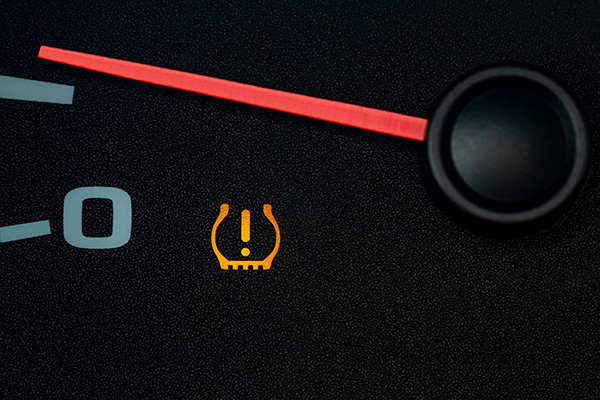
Seeing your tire pressure warning light come on is frustrating, especially after you’ve already topped off the tires. You expect the warning to disappear, but it stays on, leaving you wondering whether it’s safe to keep driving or if something else is going on.
This is a common issue drivers face, and there are several reasons your tire pressure monitoring system (TPMS) may still be alerting you after you’ve added air. Understanding how the system works and what causes it to stay lit will help you fix the problem and avoid unnecessary stress.
How the Tire Pressure Monitoring System Works
The TPMS is designed to alert you when one or more of your tires are underinflated. It relies on sensors inside the tire or on the valve stem that monitor the air pressure and send data to your car’s onboard computer. When pressure drops below a safe threshold, usually 25% below the manufacturer’s recommendation, the light on your dashboard comes on.
There are two types of TPMS systems: direct and indirect. Direct systems use individual pressure sensors in each tire, while indirect systems estimate pressure based on wheel speed and ABS sensors. Most modern vehicles, including many sold in Maryland and Delaware, use the direct system for greater accuracy.
You May Have Incorrectly Set the Tire Pressure
Sometimes, the issue isn’t the system but the actual air pressure. Simply inflating the tires to an estimated number or using a gas station gauge could leave you slightly over or under the correct PSI. Even small differences can prevent the light from turning off.
Always check the pressure with a reliable tire gauge and compare it to the specifications on the sticker inside the driver’s door. Set all four tires—including the spare, if equipped with a sensor—to the exact recommended level.
Temperature Changes Can Trigger the Light
In areas with significant seasonal shifts, such as the Mid-Atlantic, temperature fluctuations can impact tire pressure. For every 10-degree drop in temperature, tires can lose about 1 PSI. So, if you filled your tires on a warmer day, and the temperature dropped overnight, the pressure may have fallen again without you noticing.
The TPMS light may come on more often during the colder months, especially in the morning. In these cases, adding a little extra air or rechecking pressure after your vehicle has warmed up can solve the issue.
One or More Sensors Could Be Failing
If the tire pressure is spot-on but the light stays on, there could be a problem with one of the sensors. These sensors are battery-powered and tend to last 5 to 10 years. If your vehicle is older or the sensor has been exposed to moisture or damage, it may not be transmitting accurate data.
A TPMS scan tool can quickly identify which sensor is failing or if one is missing. Replacing a faulty sensor usually solves the problem, but it must be reprogrammed to communicate correctly with the car’s computer.
The System May Need to Be Reset
Some vehicles require a manual reset of the TPMS after tire pressure has been adjusted. This can involve pushing a button inside the cabin or using the vehicle’s infotainment system. If this step is skipped, the system may continue displaying the warning even though all tires are properly inflated.
Your owner's manual will specify whether your vehicle needs a manual reset and how to complete the process. If it doesn’t mention a reset, the system should automatically update once it detects the correct pressure, but this can take several minutes of driving.
Is It Safe to Drive with the TPMS Light On
It depends. If you’ve confirmed that all tires are properly inflated and the light is staying on due to a sensor error or reset issue, it’s not an immediate safety concern. However, ignoring the warning could be risky if the tire pressure is genuinely low or uneven.
Underinflated tires reduce traction, increase braking distances, and can cause premature wear or even blowouts. Until you're certain the system is functioning correctly, it’s wise to limit high-speed or long-distance driving.
Schedule a TPMS Inspection at Admiral Tire And Auto of Edgewater in Maryland or Delaware
If your tire pressure light is staying on and you're unsure why, let our technicians take a closer look. We use advanced diagnostic tools to test sensors, reset systems, and ensure all tires meet the correct specifications.
Call Admiral Tire And Auto of Edgewater in Maryland or Delaware to schedule a TPMS inspection and drive with confidence, knowing your tires and your safety are in good hands.
You can also visit any of our locations:
- 3420 Pike Ridge Road Edgewater, MD
- 2325 D Crain Highway Mitchellville, MD
- 1115 Industrial Park Way Denton, MD
- 1929 Kirkwood Highway Newark, DE
- 15204 B Marlboro Pike Upper Marlboro, MD